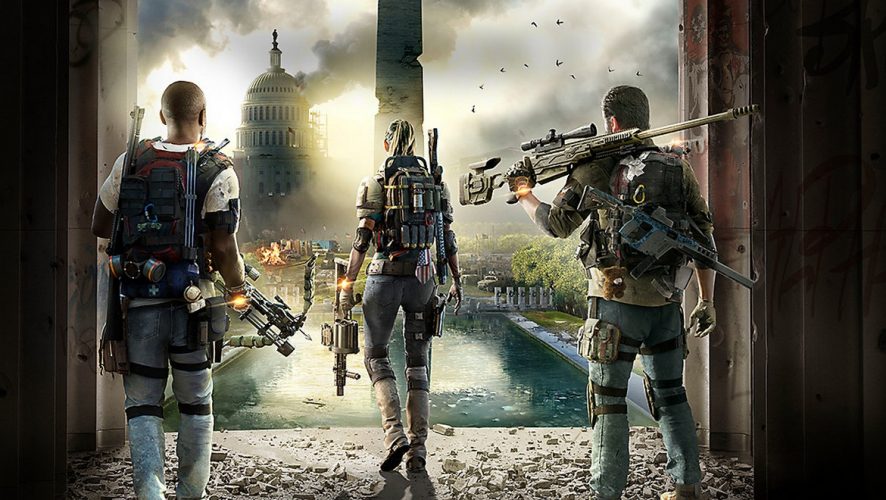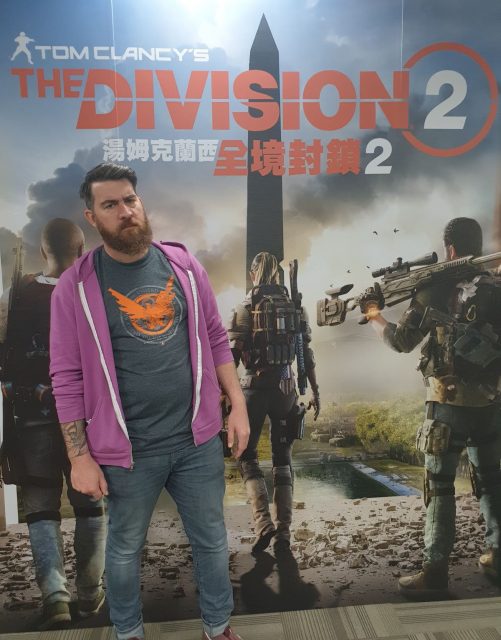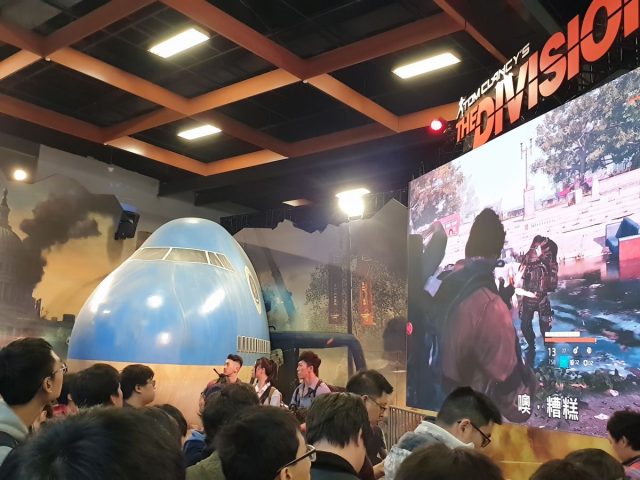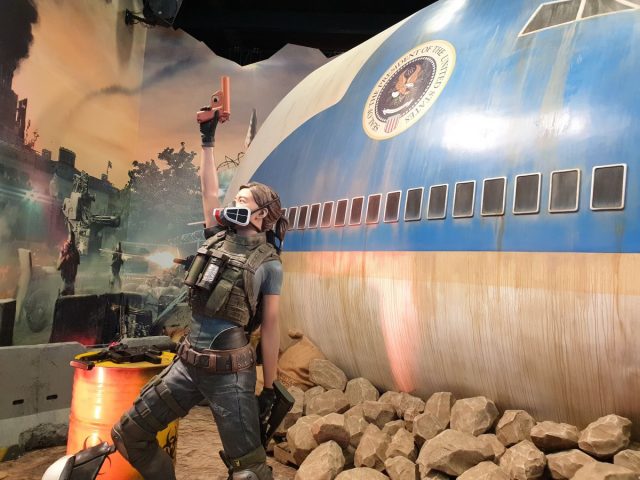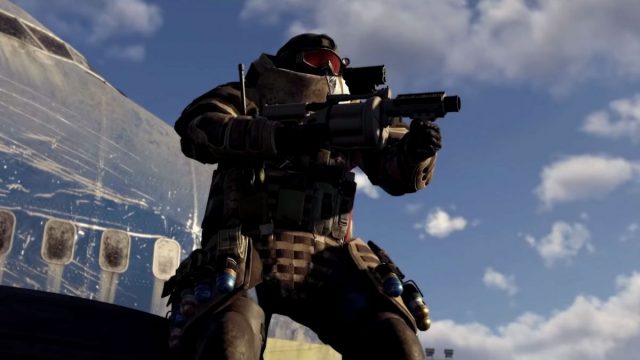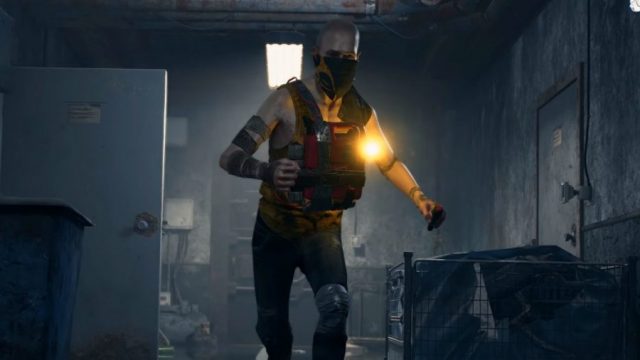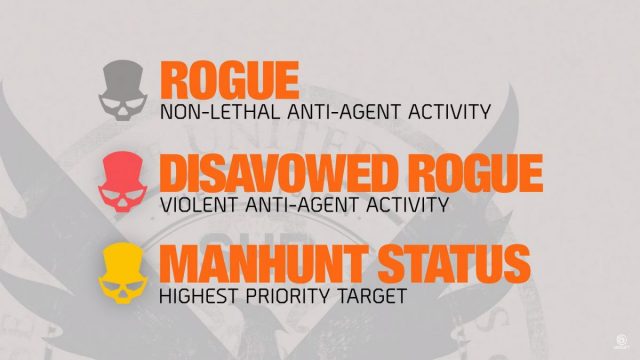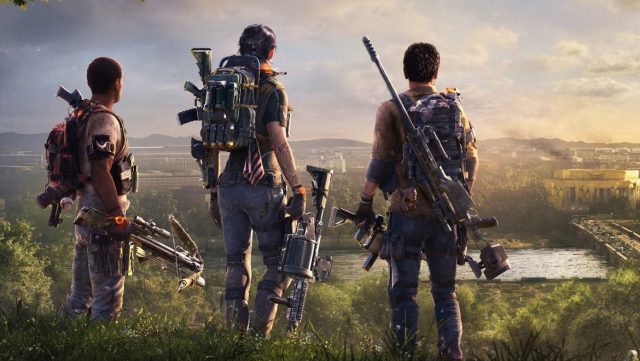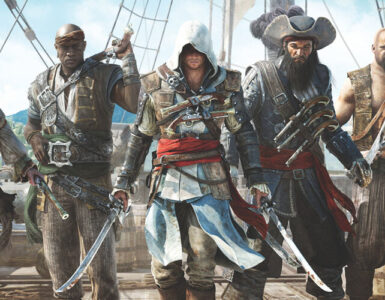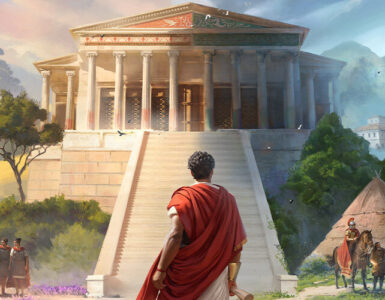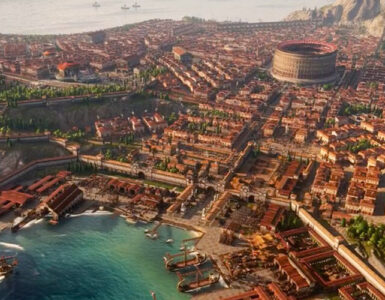While the first game did decent numbers and created a loyal community, Tom Clancy’s The Division 2 is already tracking to be much bigger than its predecessor. Whether it is the new setting, the continuing story, new Dark Zone mechanics, or even the upcoming Beta, the anticipation for Massive Entertainment and Ubisoft’s latest games as a service title is building exponentially.
We are big fans of the shooter, and given the chance to sit down and discuss the state of development for the game with Senior Game Designer, James Norris, we reported for duty with much excitement.
Against a backdrop of a ruined Washington skyline, it reminded us of how much has changed since the Dollar Flu AKA the Green Poison took hold of New York. Now, “seven months later from the first game, it’s summertime in DC. It’s hot, and a lot of stuff has happened since the first game.”
“It started out with rioting, and then the government sort of collapsed. Then these new factions turned up and started fighting for the control over the city, and it’s up to you as a Division agent, along with other agents and the people of Washington, DC, to restore society and prevent an all-out civil war.”
A significant amount of time has passed between the games, and the city itself has taken plenty of hard knocks, “the monuments have been thrashed, stuff is growing, and no one’s used a lawn mower in like seven months.”
Furthermore, “a yellow powder was created as a cure. Now, the government didn’t really test any of this out, and the people of Georgetown had demanded for it.” Things turn south swiftly, and it wiped out everyone. “And then when the spring came and the floods came, and every bit of that yellow powder was scattered throughout different areas in DC,” resulting in an even more dire situation than it was in The Division.
If the general story strikes you as familiar territory, well, it is, but what Massive and Ubisoft are hoping players see are the evolutions of the gameplay and story development they have come to love in The Division 2. It all starts with the three enemy factions players will go up against – True Sons, Hyenas, and the Outcasts.
“They all kind of operate in different ways, each of the factions. The Hyenas are kind of bloodthirsty, sort of hedonistic crazy people, and their idea of combat is to just disrupt what you’re trying to do. They’re not necessarily organized in the same way that the True Sons are, but they’re trying to just mess with what you’re doing.”
Enemy types are also getting a nice refresh, such as the armoured tank that we saw from E3. While players can do it the hard way with an all-out assault, “you can also shoot them in that weak point at the back, blow it up, and then the rest of your team has a chance to use small arms to take him down even quicker.”
“We wanted to provide different ways of dealing with these big threats, and that’s one of the many things that the specialisations provide us is a clear way to take down major threats quickly.
That forward-thinking mentality has also influenced the way the developers are planning for The Division 2, and this should come as music to the hardcore fans’ ears,
“We developed The Division 2 with an endgame-first mentality, because we wanted to make sure that on day one, there are loads of stuff for people to do, even if they hit the level cap – as soon as you reach level 30, you unlock specialisations, and there’s three different Dark Zones that we have to offer; there’s Conflict, our PvP mode, Team Deathmatch, and Domination as well.
For the first time, we’re introducing eight-player raids, which is going to be the biggest challenge the Division franchise has ever seen.”
As one of the developers working on endgame content, James Norris knows exactly how to appease the ravenous appetites of gamers, and it is definitely heartening to see that the support for the game will ensue for a long time, just like the first game.
“We have a full year of free DLC already planned for the Division 2, and me personally, and I love taking a look at what the community is requesting, figuring out which things we can do. We listen to them, we like to try and do everything that we can in our power to make the game a better environment for them.
It’s been an interesting process working on the Division 2 while still supporting Division. We’re coming up to the launch of the new game, and we’re going to continue our support for the Division 2 much in the same way that we did for The Division.”
For many gamers, eschewing multiplayer components for a solo experience is their method of choice to enjoy a game, and The Division 2 is no exception. While the raids are definitely impossible to complete alone (for now), the rest of the game can be, and to the team back at Massive, that is very important.
What is more interesting to Norris is that “it’ll be good to see what sort of solo builds people come up with: do they use the same build throughout the whole game? Do they change it up? With all the enemy factions having different sort of techniques, plus all the different skills players have to accomplish missions, I think there’s even more stuff for a solo player to have in his arsenal to play so than ever before.”
Returning are some of the more iconic skills from the first game, such as the turret and the seeking mine, but the developers “wanted to do some other ones as well. They are a bit more active than the other skill, we wanted to make them more player controlled, more active, so you can strategize with them in different ways.”
“We felt that a drone, a flying sort of turret, was one example of how you can have an active skill that. For example, I could send him off to distract some guys over there while making a flanking manoeuvre – so it’s more like a little teammate than just a skill that you sit down and it does its thing.”
The team “wanted to give players new toys to play with, and we feel like all the new skills that we’ve added plus the specializations, with all the new gear that we’ve we’ve come up with as well, give you more diversity that than ever before.”
Based on what we have seen and played, the potential is there for innovative players to come up with enough loadouts to deal with any situation in PvE, however, there is the looming spectre of PvP as well, especially with the addition of Conflict, as well as three new Dark Zones and mechanics to contend with.
Available on day one, Conflict “is just another way for the for players who really want to want to test their might against other players to enjoy The Division. If what you want is to test out your build, and maybe you’ve got a new idea of something you want to try in combination with a different skill, Conflict is going to be a really good place for players to do that.”
The increase in variety of Dark Zones not only give players more choice, but also serves an important story element. The three distinct areas all tell a story, “so in the East area of Georgetown, it’s where they first tried out the yellow powder and failed. There’s a lot of tight alleyways, places for you to set up an ambush on either enemies or other players”
“Then there’s Union Station, where the army was storing the yellow powder, but it was volatile, and it exploded, so that area became off limits. And that area, it’s kind of lots of dense foliage, long, long corridors to get some nice long shots off.
Dark Zone south, which was where they have quarantined a bunch of people who had contracted the green poison and were promised to be to be saved. These conditions were not very good there, and the floods that came in the spring brought with it that yellow powder, so more people died – and that’s kind of some interior areas like large interior buildings with some great places to hide out in as well.”
“These are three very different feeling Dark Zones. The story kind of dictated that these were the area’s most hardly hit by the outbreak and the most dangerous area, certainly, and giving us some variety for players who enjoy the Dark Zone.
While players can head into the Dark Zones once they have gained access, a weekly rotation will confer the status of Occupied Dark Zone to one of the areas. This will eliminate all the normalizing in the vanilla Dark Zone experiences. So if you have a better gun, it is going to matter.
Otherwise, “the other two Dark Zones are going to normalize that gear. So it makes it a more fair environment, it makes it more skill-based, rather than skill plus having that added bonus of having better gear.”
Going Rogue has also undergone a transformation, with different statuses based on what you as an agent has decided to do.
“We’ve added the new kind of disavowed status, which means if you take loot from a chest, that somebody else has unlocked or you pick up items off of the players dead body – these are just two examples which allow other agents to shoot you, but you won’t be on the map or anything like that.” Successive rogue actions will eventually “give you access to the Thieves Den, where you can bank your status to gain some additional XP and other benefits.
“Of course, there’s the rogue status, where you go after other players. And then the manhunt status, we now have the manhunt terminals, which can already be rewarding. But if you want to stay under manhunt and keep going to the next one, you’re going to get a better reward.”
You can always go on to the third one for even better rewards; “however, everybody’s going to know that there’s only one station left, so they’re probably going to be there waiting for you. It adds more for the rogue players to do, it adds more for the rogue hunters to do, and it’s just going to add some new dynamics to the Dark Zone.”
With so much for players to do and get into, both Ubisoft and Massive Entertainment wants to make sure everyone gets rewarded for the time and effort put into the game, and thankfully, there is plenty of depth to go into for progression, both for cosmetics and gear.
“We don’t want to make an optimum place for you to get the best gear. But within the different areas, the Dark Zone, conflict and the PvE modes, you will unlock different sort of vanity rewards, there will be things that you earn from progressing through the mode that you enjoy, it just won’t give you any gameplay advantage, and will be more of a personal or customization sort of thing.
All different types of weapons and gear are available – SMG, shotguns, all the basic types are available. You want to try to get into level 30 in the main game, but as you play PvP, you’ll also be getting regular XP as well, and eventually, you’ll unlock possible weapons and gear configurations through whichever game mode you choose to enjoy.”
Leveling from 1 to 30 will unlock more gear, but “there will still be Dark Zone levels – for example, new passive perks to the Dark Zone. I can’t go into details about what exactly they are, but let’s say one of them unlocks at level 10 and your Dark Zone level is 11, but you go rogue and somebody shoots you and you drop down tonight, you’ll then lose that perk for that moment, but you can always get it back as you continue to progress through the Dark Zone levels.”
With the private Beta coming up real soon, everything is shaping up to be nothing short of amazing based on early previews. However, an online game is only as good as its community and content, so we still have to be cautious going in.
That said, we are definitely eager to jump back in as an SHD Agent this coming March 15, and The Division 2 looks set to continue on Ubisoft’s record of home runs in recent time.
Tom Clancy’s The Division 2 officially releases on March 15 for PS4, Xbox One and PC.

